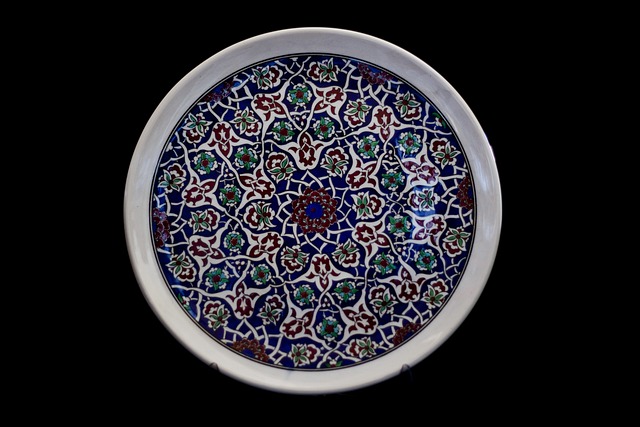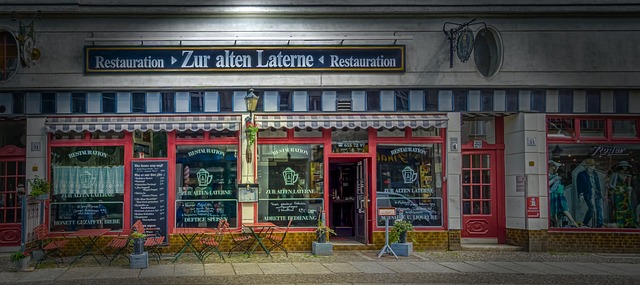Tile damage in kitchens is a common issue due to moisture, foot traffic, and spills. Early identification and regular maintenance can prevent minor damages from becoming major problems. Restoring kitchen tiles involves assessing damage (chips, cracks, stains), choosing the right method (cleaning, sealing, regrouting, repairing, replacing), and using professional tools and products. The process extends tile lifespans, enhances aesthetics, promotes environmental sustainability, and increases property value. Proper preparation, avoiding DIY projects without proper knowledge, addressing root causes, and regular maintenance are key to successful tile restoration. Using appropriate materials and tools ensures high-quality results that look as good as new.
Tile restoration is a game-changer for kitchen renovations. Kitchens, with their high traffic and exposure to water and spills, often suffer tile damage over time. Understanding common types of kitchen tile damage and implementing proper maintenance can extend their lifespan significantly. This article delves into the benefits of restoring kitchen tiles, detailed processes, choosing the right techniques, cleaning tips, avoiding mistakes, selecting quality materials, and maintaining your restored kitchen tiles for years to come.
Understanding Tile Damage in Kitchens

Tile damage in kitchens is a common issue due to the high moisture content, constant foot traffic, and potential spills. Over time, this can lead to a variety of problems such as chips, cracks, stains, and delaminating (when the tile’s surface separates from its backing). The key to effective tile restoration lies in identifying these issues early on. Regular cleaning and maintenance can prevent minor damages from becoming major repairs.
Understanding what type of damage your kitchen tiles have incurred is crucial for choosing the right restoration method. Tile restoration techniques range from simple cleaning and sealing to more intensive methods like regrouting, repairing, or even replacing specific tiles. Professional tile restorers use specialized tools and products designed to tackle these challenges, restoring the kitchen’s original beauty while ensuring longevity and enhanced durability against future damage.
Benefits of Restoring Kitchen Tiles

Restoring kitchen tiles offers a multitude of benefits that can transform your space into a functional and aesthetically pleasing area. It is an effective way to revive the look of tired, old tiles, extending their lifespan and reducing the need for costly replacements. Tile restoration not only improves the visual appeal but also enhances the overall value of your property. By choosing this option, you can preserve the original charm and character of your kitchen, creating a timeless and elegant setting.
Moreover, it is an environmentally friendly approach as it reduces waste by repurposing existing tiles. This process involves cleaning, repairing, and sealing the tiles, making them look as good as new. With proper care, restored tiles can last for many years, providing a cost-effective solution for homeowners seeking to update their kitchens without breaking the bank.
The Process of Tile Restoration

Tile restoration for kitchens involves a meticulous process designed to revive and rejuvenate worn-out tiles, extending their lifespan and enhancing their aesthetic appeal. It begins with careful inspection to assess damage, including cracks, chips, discolored grout, and delaminated surfaces. Based on this evaluation, the restoration method is tailored—from gentle cleaning and sealing for minor issues to more intensive techniques like regrouting, repatching, or even complete tile replacement for severe cases.
The heart of the process lies in removing existing sealers and contaminants, followed by repairing or replacing damaged areas. After preparation, a new sealer is applied to protect against stains and moisture. This step ensures tiles not only look their best but also remain durable and long-lasting. The entire restoration process combines advanced tools, specialized chemicals, and skilled craftsmanship to transform kitchen tiles from ordinary to outstanding.
Choosing the Right Restoration Techniques

Choosing the right restoration techniques is paramount for achieving optimal results in tile restoration projects, especially in kitchens where tiles often bear the brunt of daily use. The first step involves assessing the extent of damage, which can range from minor chips and cracks to severe discoloration and delamination. For light wear and tear, simple polishing and sealing may suffice to restore the tiles’ original gloss and protect against future stains.
More extensive damage might require regrouting or even complete tile replacement. Regrouting involves removing the old grout and installing new, ensuring a tight seal that prevents water penetration. In cases of severely damaged or outdated tiles, porcelain or ceramic tile restoration can be a game-changer, allowing you to choose from a variety of colors and finishes to match or complement your kitchen’s aesthetic.
Tips for Effective Cleaning Before Restoration

Before diving into tile restoration, proper preparation is key. Effective cleaning is the first step to ensure optimal results. Start by removing all loose debris and grime from the tile surfaces using a mild detergent and warm water solution. This initial scrub helps to loosen stubborn stains, making them easier to remove during the restoration process. Avoid harsh chemicals or abrasive brushes as they can damage the tile or grout lines.
For deeper cleaning, consider soaking the tiles in a mixture of baking soda and warm water for a few hours. This natural cleaner penetrates and dissolves hard-to-remove marks without causing any harm. Rinse thoroughly afterward to eliminate any residue, ensuring the area is dry before proceeding with the restoration process.
Common Mistakes to Avoid During Restoration

When embarking on tile restoration for kitchens, homeowners often make some common mistakes that can impact the final results. One of the biggest blunders is attempting DIY tile restoration without proper knowledge and tools. Tile work requires precision and expertise; leaving it to inexperienced hands may lead to uneven repairs or inaccurate installations. This can be costly and time-consuming in the long run.
Another mistake to avoid is not addressing the root cause of damage. Surface repairs might temporarily fix chips or cracks but won’t last if the underlying issues aren’t resolved. For instance, neglecting proper drainage or sealing can result in recurrent water damage, compromising the longevity of newly restored tiles. Always inspect and address any structural or moisture-related problems before beginning restoration to ensure durable and long-lasting results.
Selecting the Best Materials and Tools

When it comes to tile restoration for kitchens, choosing the right materials and tools is paramount. The first step involves evaluating the current state of your tiles—their age, damage, and type. For instance, natural stone tiles like marble or granite might require specialized cleaning solutions to prevent etching, while ceramic or porcelain tiles may need more robust brushes and abrasives for deep cleaning.
Consider also the durability and aesthetic appeal of restoration materials. High-quality grout, for example, can significantly enhance tile appearance and prevent future staining. Additionally, selecting appropriate tools like wire brushes, power drills with specialty bits, and high-pressure cleaners ensures efficient and effective tile restoration, leaving your kitchen looking as good as new.
Maintaining Your Restored Kitchen Tiles

After a successful tile restoration project, it’s crucial to implement proper maintenance routines to ensure your kitchen tiles remain in pristine condition. Regular cleaning is essential; use mild detergents and avoid harsh chemicals to protect the restored surfaces. A gentle scrub with a soft-bristled brush will suffice for removing everyday grime and spills.
Protecting your tiles from water damage is another vital aspect. Promptly wipe up any leaks or spills, and consider using waterproof sealers to create a protective barrier. This simple step can prevent stains and extend the life of your tile restoration work, keeping your kitchen looking as good as new for years to come.
